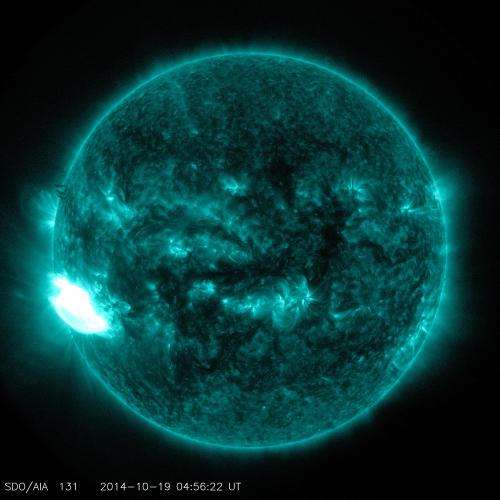Extreme ultraviolet image of a significant solar flare

The sun emitted a significant solar flare on Oct. 19, 2014, peaking at 1:01 a.m. EDT. NASA's Solar Dynamics Observatory, which is always observing the sun, captured this image of the event in extreme ultraviolet wavelength of 131 Angstroms – a wavelength that can see the intense heat of a flare and that is typically colorized in teal.
This flare is classified as an X1.1-class flare. X-class denotes the most intense flares, while the number provides more information about its strength. An X2 flare is twice as intense as an X1, and an X3 is three times as intense.
Solar flares are powerful bursts of radiation. Harmful radiation from a flare cannot pass through Earth's atmosphere to physically affect humans on the ground, however—when intense enough—they can disturb the atmosphere in the layer where GPS and communications signals travel.
Provided by NASA




















